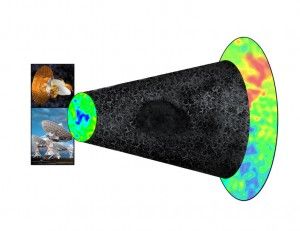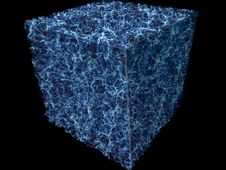Cosmos: Voids in Space

As astrophysicists penetrate the universe with increasingly advanced equipment and means of data analysis, they are finding a great overall emptiness. Although to our eyes the night sky seems crowded with stars and galaxies, this is an illusion. All those luminous objects are insignificant compared with the vast amount of nothingness which is expanding at a phenomenal rate.
Large scale images of the universe reveal that galaxies are bunched along filaments that extend for millions of light years. And between the filaments are huge spaces devoid of matter, where the density of matter may be about one atom per cubic meter. The largest such void discovered so far is estimated as about one billion light years in size. Such regions are thought to be the coldest areas of the universe.
Although voids are predicted by the Standard Model of physics, very little is known about their origin and their relationship to both dark matter and dark energy. Data from the Sloan Digital Survey and other deep space sources indicate that most of space is devoid of either baryonic or dark matter. However, what the void consists of will no doubt be resolved in time. Many astrophysicists and particle physicists expect the void to consist of a kind of "quantum foam" --full of virtual particles that appear and disappear instantaneously.

